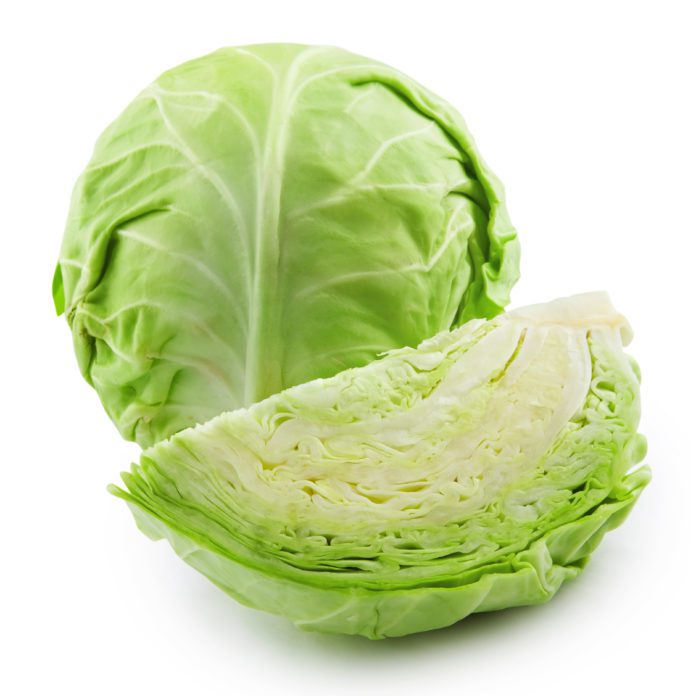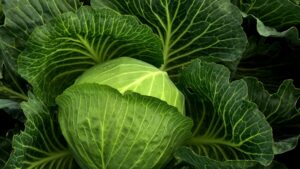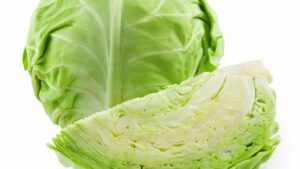“Cauliflower is nothing but cabbage with a college education.”
Mark Twain
On this World Cabbage Day, check out some of these quick facts you should know about cabbage:

Scott Robb of Palmer, Alaska, is currently the proud world record title holder of the largest cabbage. He won that title at the 17th annual Giant Cabbage Weigh-Off in 2012, with a mammoth cabbage weighing in at 62.71 KG (138.25 pounds).
All cabbages and its relatives come from the wild Brassica oleracea This large group contains head cabbage, broccoli, cauliflower, kale, Brussels sprouts, and kohlrabi.
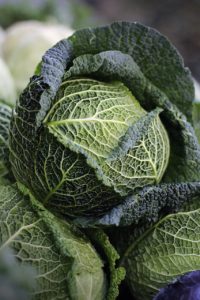
For thousands of years, people have selected for various parts of this Brassica plant. Selecting for the terminal buds led to head cabbage, selection for lateral buds led to Brussels sprouts, selection for the leaves lead to kale etc.
All these cabbage types are in the family Cruciferae. The family name comes from the Latin word meaning cross, because the flowers are cross-shaped.
At the turn of the century, cabbage was thought to be food for poor people. Now it is regarded as one of the most nutritional vegetables and is thought to have strong anti-aging and anti-cancer properties. In addition, cabbage is low in saturated fat and cholesterol.
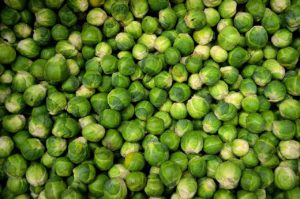
Evidence shows the different cabbages have been cultivated for over 4,000 years. Brussel sprouts, which are in the cabbage family, are the youngest with records dating back only 500 years.

The country with the largest volume of cabbage consumption was China (33M tonnes), comprising approx. 45% of total consumption. The world’s second-largest consumer is India (9.2M tonnes), and in third position Russia (3.7M tonnes).

Although cabbage is considered Russia’s national food, they do not have the highest levels of cabbage per capita consumption. In 2018 it was Romania with 57 kg per person, South Korea (46 kg per person) and Ukraine (39 kg per person).

Scrolls from 1000 BC found in China stated cabbage could be used to cure baldness in men. Perhaps this is why famous baseball player Babe Ruth used to wear a cabbage leaf under his baseball cap during games and it is reported he switched it out for a new leaf halfway through the game.
Cabbage is high in dietary fibre, vitamin C, vitamin K, folate, potassium, manganese, vitamin A, thiamine, vitamin B6, calcium and iron which help keep the digestive tract and colon in a healthy condition.

Cabbage Timeline
- 371-287 BC — Theophrastus, the “Father of Botany” mentions cabbages in his texts
- 8th Century — Cabbages were cultivated in the “Capitulare de villis,” a text that gave rules and regulations on how to manage the lands and laws in the country during the time of Charlemagne.
- 14th Century — Round-headed cabbages appeared in England and became popular as a cuisine throughout Europe.
- 1541 — Cabbage was brought to the U.S.
- 1570 — Red cabbage was first described in England.
Cabbage Statistics
0.5 to 4 kilograms is the size a cabbage head can grow.
0.5 cups of cooked cabbage is about 1/3 the amount of vitamin C you need for the day.
2.5 grams is the amount of fiber in one head of cabbage.
61,100 is the number of acres planted of cabbage in the U.S. in 2019.
278.5 million pounds is the record of cabbage imports in 2020.
15 calories is found in one cup of cabbage.


